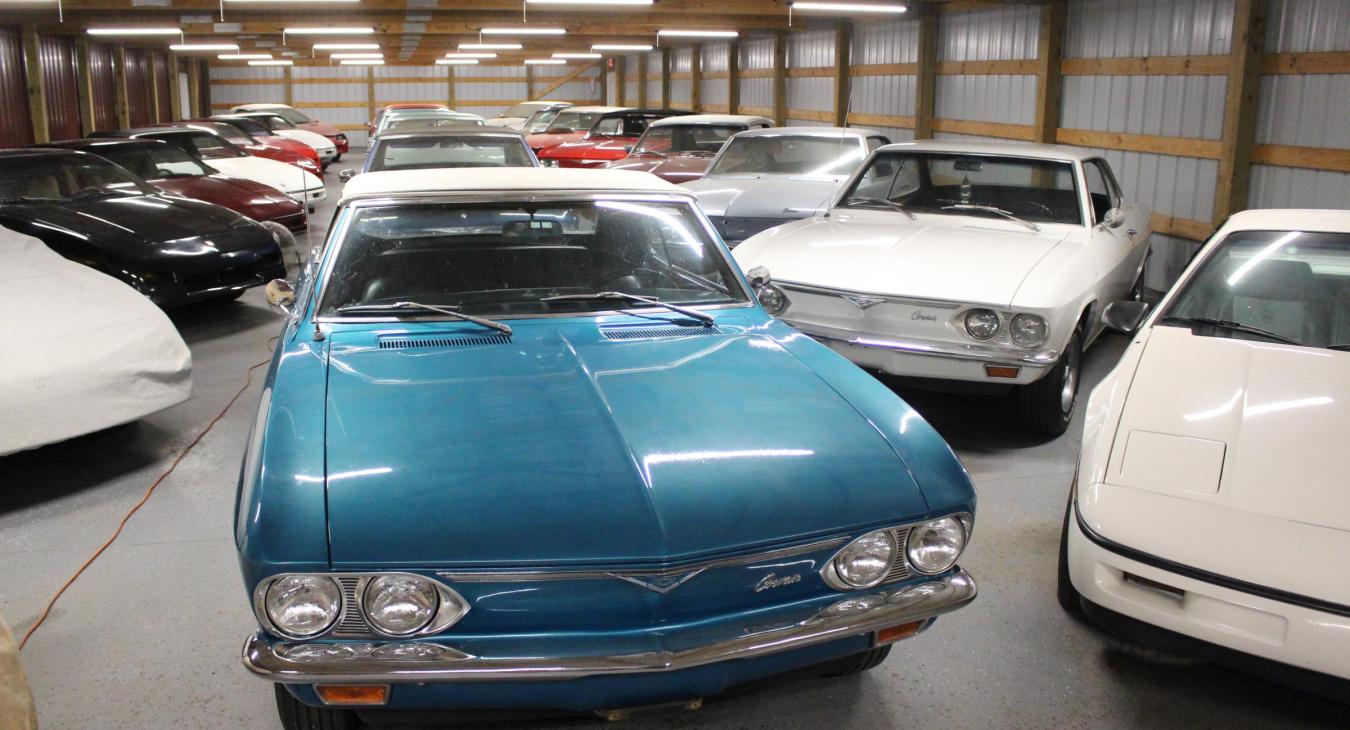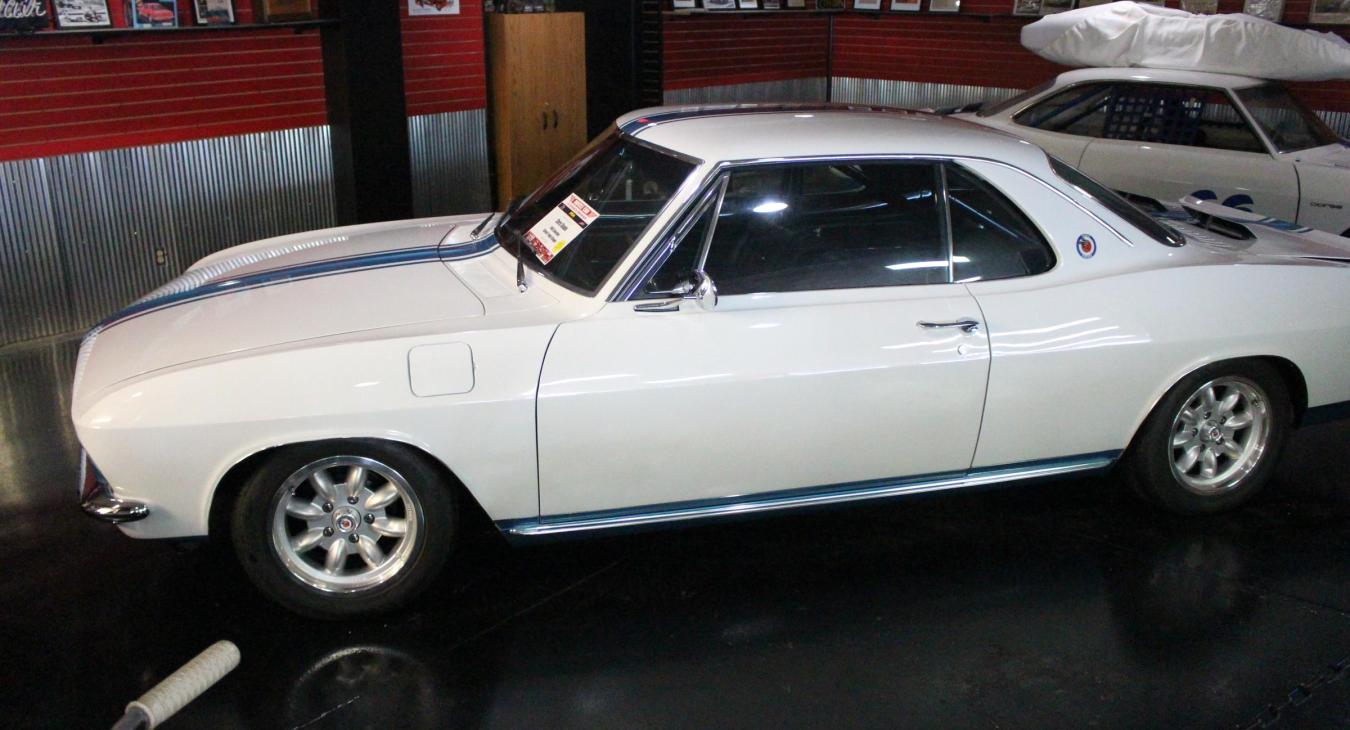On a visit to Hastings, Nebraska, you might hear the familiar purr of a flat-six engine long before you see it. The sound is distinctive, carrying a touch of nostalgia for an era when cars were bold, quirky, and unlike anything else on the road. That’s when you know Chris Shade is nearby, probably giving a tour of his pride and joy: the Corvair Museum of America.
For Shade, this is not just a museum. It is the culmination of a lifelong love affair with one of Chevrolet’s most unusual cars. He grew up in a family where the Corvair wasn’t just parked in the driveway. It was woven into the fabric of daily life. “We’d load up in the Corvair to go get ice cream,” he recalls.
What began as a passion for a car eventually became the story of his family, his business, and now his museum.
Shade’s Classic Corvairs, his shop in Hastings, has become something of a pilgrimage site for enthusiasts from across the country. He restores, sells, and services Corvairs, and his lot is often filled with gleaming examples of Chevrolet’s short-lived experiment in innovation. Over the years, visitors would walk through his shop and marvel at the rows of cars, the memorabilia on the walls, and the care put into every detail. Inevitably, someone would say, “This is a museum!” Eventually, Shade decided to make it official.
In 2022, the Corvair Museum of America was incorporated as a nonprofit. Its mission is simple but heartfelt: to preserve the Corvair’s story and share it with the world through engaging, hands-on exhibits. Its vision extends beyond just history, aiming to entertain visitors of all ages while keeping alive the legacy of a car that dared to be different.
And different it was. When Chevrolet introduced the Corvair in 1960, it was a gamble. American buyers were starting to take notice of small European imports, and General Motors wanted to compete. The Corvair’s design was unconventional: a rear-mounted, air-cooled engine, four-wheel independent suspension, and a lightweight uni-body frame. It looked sleek and sporty compared to the boxy sedans of the era.
The Corvair came in multiple styles—sedan, coupe, station wagon, convertible, van, even quirky pickups called the Rampside and Loadside. In 1962, the Monza Spyder hit the market with a turbocharged engine, making it one of the first American production cars to embrace turbo technology. It was an exciting time for Chevrolet, and in its early years, the Corvair was a hit.
But history wasn’t always kind. By the mid-1960s, the Ford Mustang had burst onto the scene, stealing the spotlight and defining the muscle car era. At the same time, consumer advocate Ralph Nader published “Unsafe at Any Speed,” which criticized the Corvair’s first-generation suspension design. Sales plummeted, and Chevrolet shifted its energy to the Camaro. By 1969, the Corvair’s run had come to an end.
That could have been the end of the story. Instead, the Corvair found new life as a cult classic. Collectors and enthusiasts appreciate its unique engineering, its daring spirit, and the fact that it stood apart from everything else Detroit was building at the time. In Hastings, Nebraska, Chris Shade and the Corvair Museum of America are ensuring that appreciation continues.
One of the highlights for visitors is The Yenko Stinger Experience, a replica of Don Yenko’s famous Chevrolet dealership in Pennsylvania. Don Yenko was a pioneer in American performance cars, and his first project was built on the Corvair platform. The Yenko Stinger was the only Yenko designed specifically for racing, and it quickly earned a reputation on the track.
Inside the museum, the Yenko Stinger Experience immerses guests in that history. A fully restored Yenko Stinger sits on display, surrounded by historic documents and racing artifacts. There’s even a tribute to Donna Mae Mimms, one of the few female racers of the era, known for her skill, spirit, and pink racing helmet.
What makes the Corvair Museum of America special, though, isn’t just the cars. It’s the people. Over the years, Shade has met enthusiasts from around the globe. Many of them now serve on the museum’s board, helping to guide its growth and future. The museum is also deeply connected to its local community, with plans to partner with charities and create volunteer opportunities as it expands.
Right now, the museum operates inside Shade’s Classic Corvairs, but there are big plans in the works. A new, dedicated facility is being developed next door, one that will allow for more interactive displays, educational exhibits, and hands-on workshops. The idea is to make the Corvair story something visitors can experience, not just observe.
For Shade, this is about more than nostalgia. It’s about honoring a car that represented innovation and risk-taking in an era when the auto industry often played it safe. It’s about preserving a piece of history that might otherwise be forgotten. And, on a personal level, it’s about celebrating the role the Corvair has played in his own life. From childhood memories to a lifelong career, the Corvair has been at the heart of it all.
The museum’s story is still being written. With each visitor who marvels at the engineering, sits in a simulator, or shares their own Corvair memory, the legacy grows. It’s a reminder that the car, once dismissed as a failure, has outlived its critics and earned its place in American culture.
In Hastings, Nebraska, the Corvair Museum of America stands as proof that sometimes, the most unusual ideas—the ones that take risks and break molds—are the ones worth preserving.


